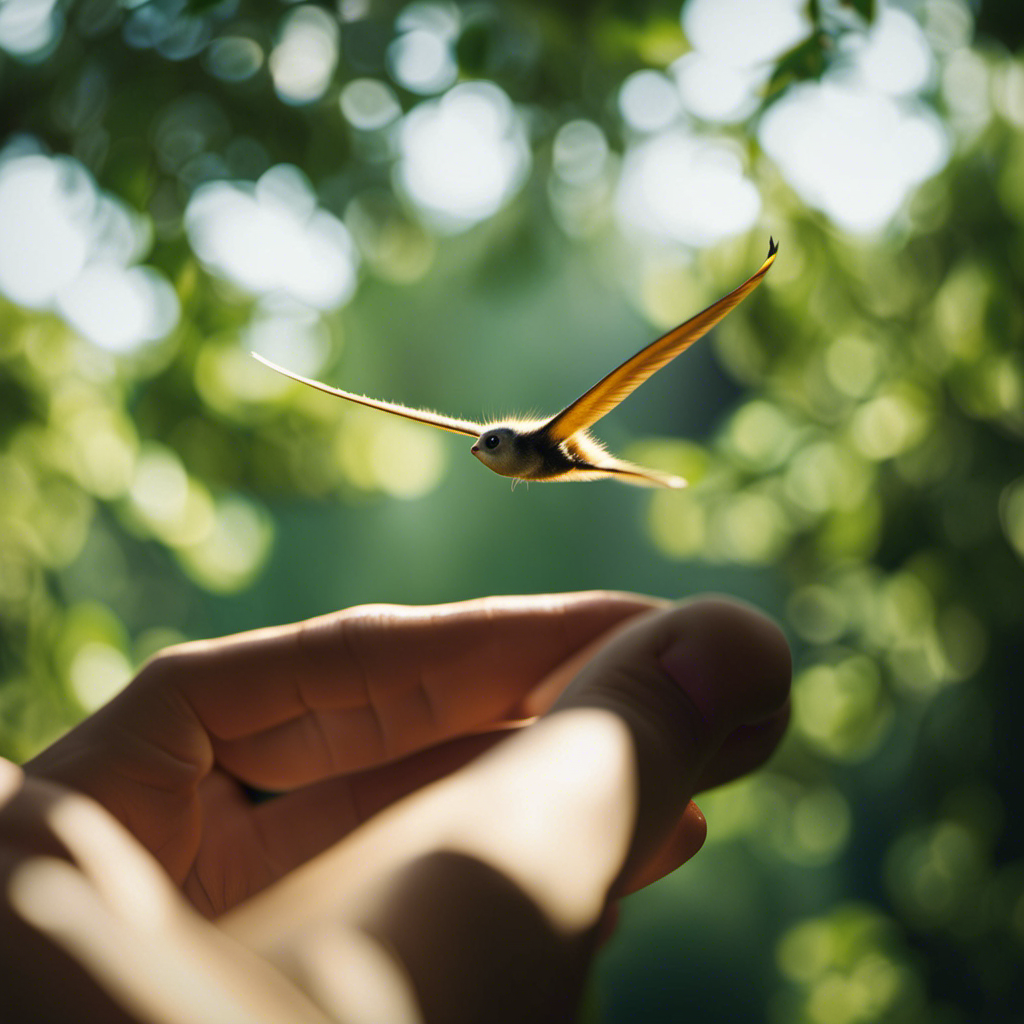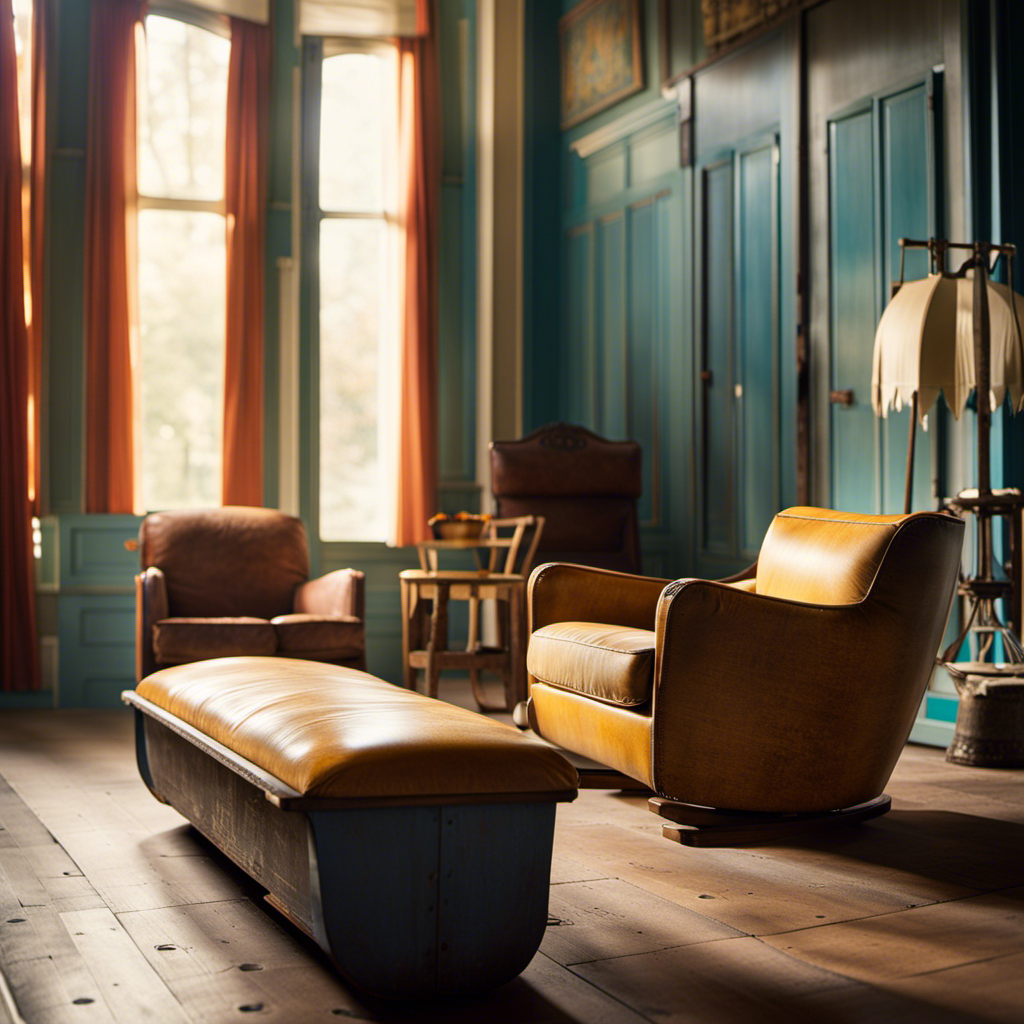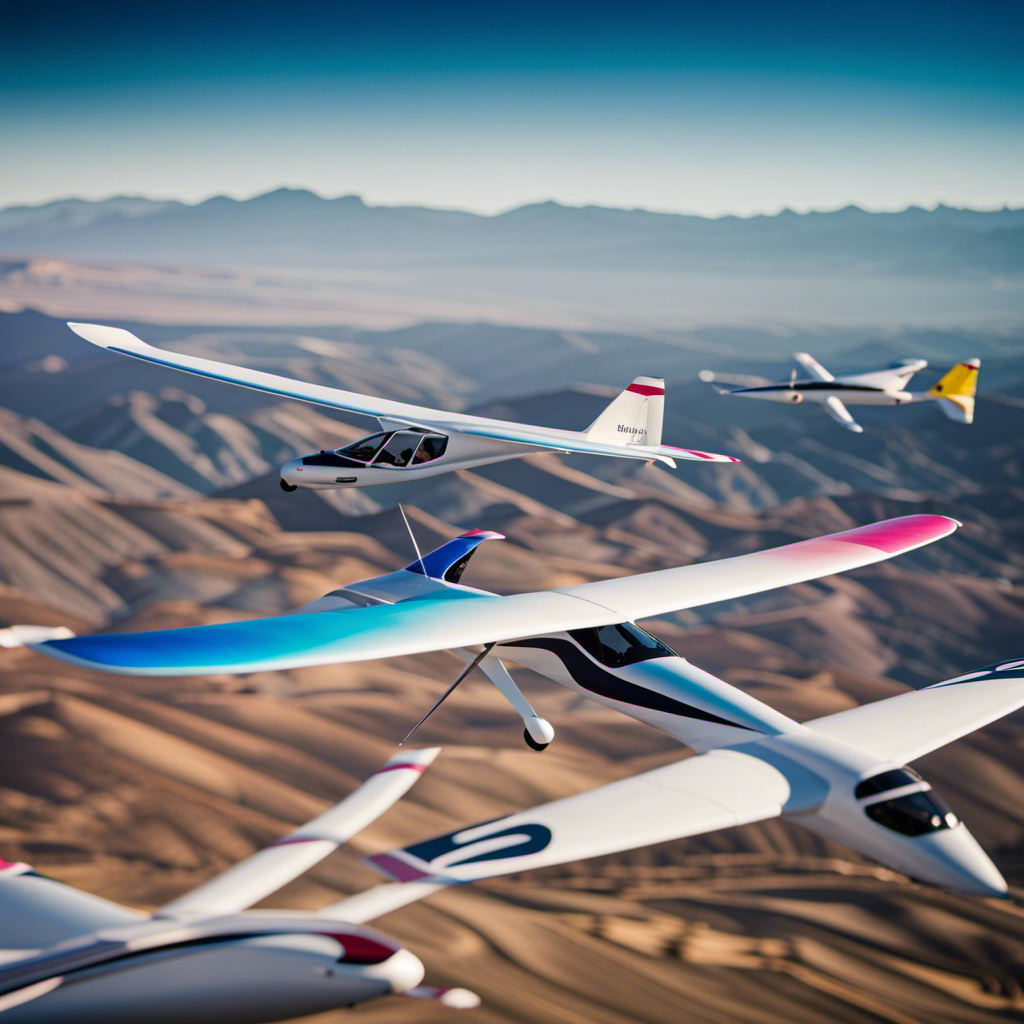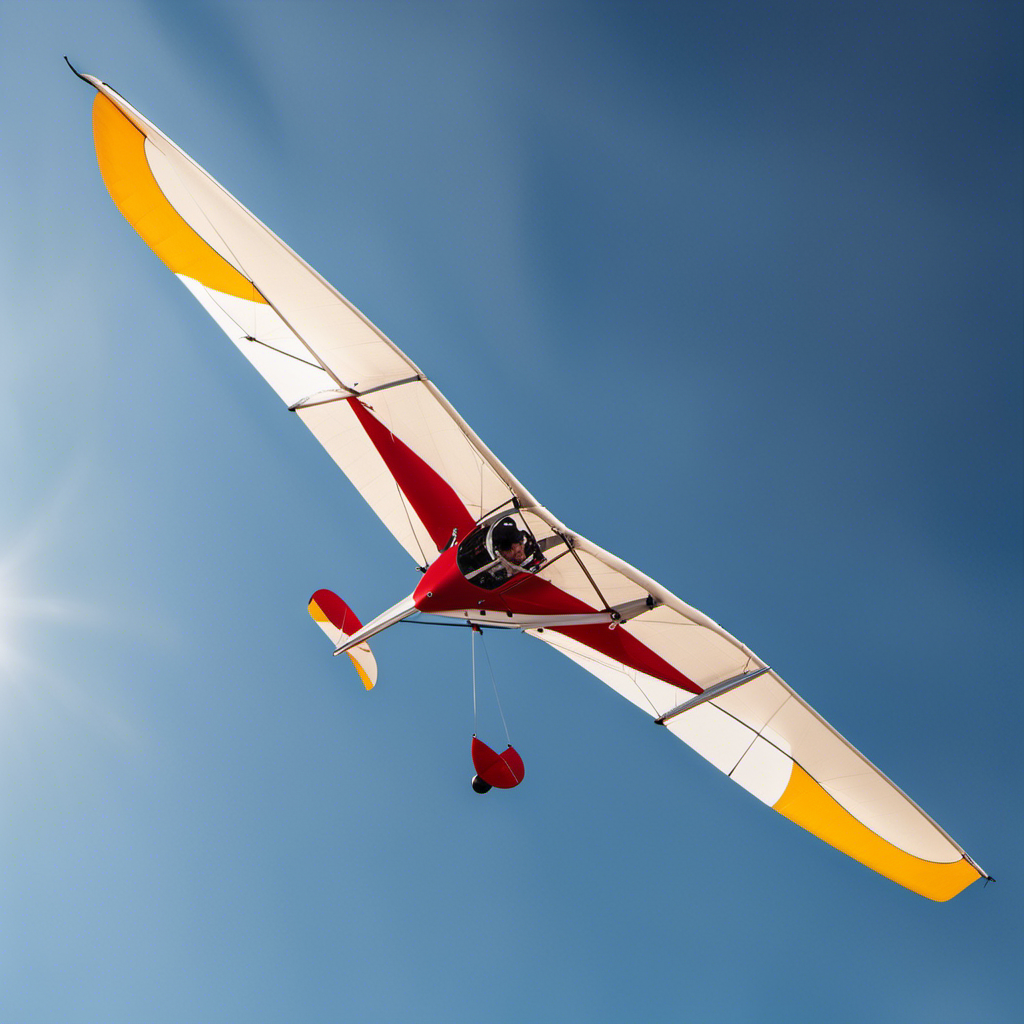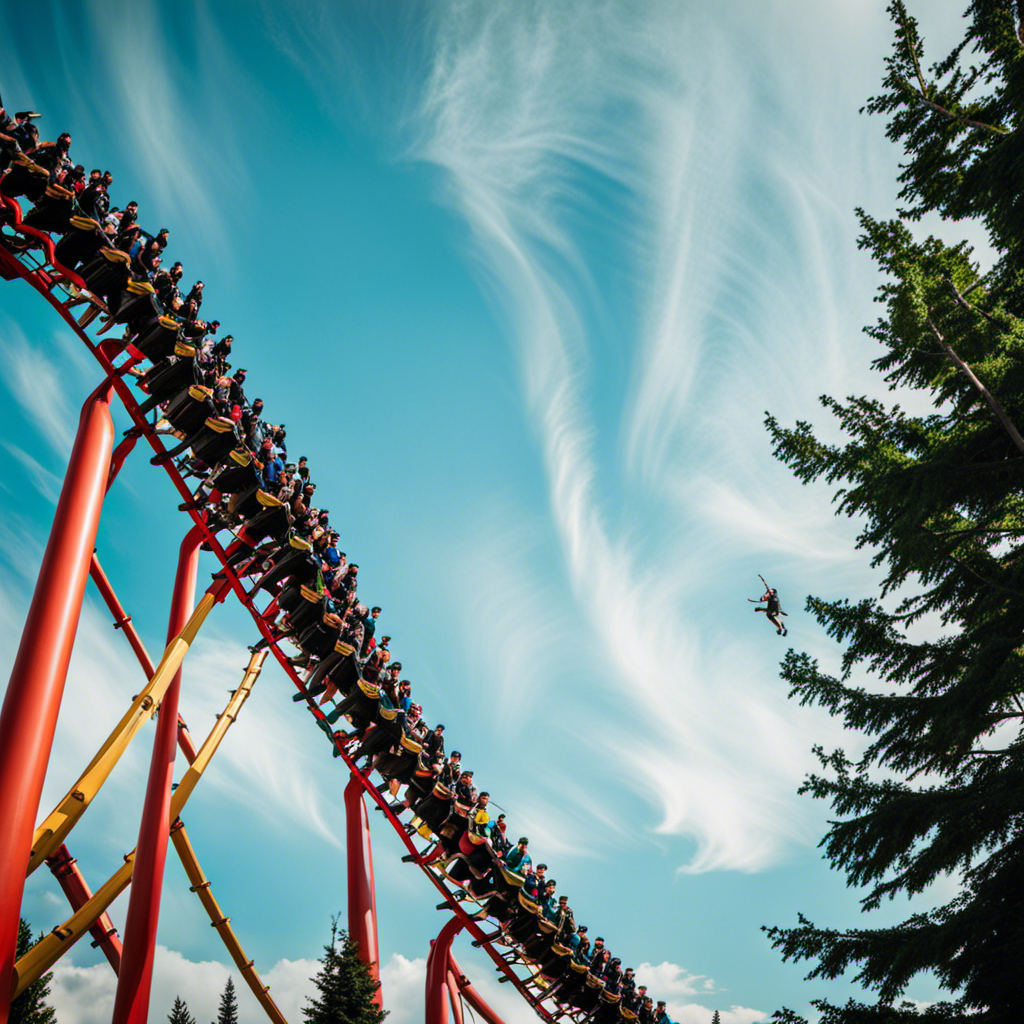As a glider owner, I have come to understand that building a connection with these fascinating creatures is a rewarding journey. Forming a bond with a glider requires patience, understanding, and a commitment to their well-being.
In this article, we’ll explore practical strategies for developing a strong bond with your glider. By creating a safe environment, providing nutritious meals, engaging in playtime, and respecting their boundaries, you can forge a deep and meaningful relationship with your glider.
So, let’s dive into the world of glider bonding and uncover the secrets to a thriving companionship.
Key Takeaways
- Socializing sugar gliders with other gliders helps develop social skills and provides opportunities for natural interaction.
- Being patient and understanding during the bonding process is crucial, as it takes time for gliders to feel comfortable and establish trust.
- Understanding body language is key to successful bonding, as gliders use scent marking, vocalizations, and body postures to express emotions and intentions.
- Trust and communication are important for bonding with gliders, as they rely on trust and forming a strong bond over time allows for a deeper connection. Learning to interpret gliders’ forms of communication enhances understanding and the bonding process.
Give Them Time to Adjust
Give them some time to adjust to their new environment and feel comfortable in their surroundings. Sugar gliders are highly sensitive creatures, and sudden changes can be stressful for them.
When bringing a glider into your home, it is crucial to give them space and allow them to acclimate at their own pace. Start by placing their enclosure in a quiet area where they can feel secure. Provide hiding spots and toys to make them feel safe.
It’s important to gradually introduce yourself to the glider. Spend time near their enclosure, talking softly and offering treats. Over time, they will become more comfortable with your presence. This gradual approach will help establish trust and build a strong bond with your glider.
Creating a safe and comfortable environment for them is the next step in the bonding process.
Create a Safe and Comfortable Environment
To create a safe and comfortable environment for your glider, it’s important to provide a spacious cage with plenty of toys and hiding spots. Gliders need room to explore and play, so a larger cage will allow them to move around freely.
It’s also crucial to offer a variety of toys and accessories that cater to their natural instincts, such as climbing branches and pouches for sleeping. Creating a peaceful atmosphere is key in establishing trust and communication with your glider. Keep their cage in a quiet area of your home, away from loud noises and sudden movements. This will help them feel secure and reduce stress.
Offer Gentle and Consistent Handling
By handling your sugar glider gently and consistently, you can build trust and establish a strong connection with them.
Sugar gliders are social animals that thrive on interaction and touch.
When handling your glider, it is important to approach them calmly and slowly to avoid startling them.
Start by offering your hand for them to sniff and get familiar with your scent.
Once they feel comfortable, you can gently scoop them up, supporting their body and allowing them to cling onto you.
Regular handling sessions will help your glider become accustomed to your touch and presence, ultimately strengthening the bond between you.
This trust-building process is crucial for creating a positive and nurturing environment for your sugar glider.
Now, let’s discuss the importance of providing a nutritious and varied diet for your glider’s overall well-being.
Provide Nutritious and Varied Diet
Providing a nutritious and varied diet is essential for the overall well-being of your sugar glider. To ensure their dietary needs are met, it is important to establish a feeding routine and incorporate glider enrichment into their meals.
Here are some key points to consider:
- Offer a balanced diet consisting of fresh fruits, vegetables, proteins, and a specialized sugar glider pellet.
- Provide a variety of food options to mimic their natural foraging behavior and prevent boredom.
- Include calcium and vitamin supplements to support their bone health.
- Offer treats in moderation, such as mealworms or yogurt drops, as a special reward.
Engage in Playtime and Interactive Activities
Engaging in playtime and interactive activities is a fun and important way to bond with your sugar glider. Bonding through enrichment involves providing your glider with toys, climbing structures, and puzzles that stimulate their natural instincts. This helps them feel mentally and physically stimulated, promoting a stronger bond between you and your pet.
Building trust through grooming is another crucial aspect of bonding. Sugar gliders groom each other as a way to establish trust and strengthen social bonds. By gently grooming your glider using a soft toothbrush or your fingers, you can mimic this behavior and build trust with your pet. As your glider becomes more comfortable, they may even groom you in return.
Use Positive Reinforcement and Rewards
When training your sugar glider, it’s important to use positive reinforcement and rewards to encourage desired behaviors. Positive reinforcement techniques involve providing a reward, such as treats or praise, immediately after your glider performs a desired behavior. This helps to reinforce the behavior and increase the likelihood of it being repeated.
By using positive reinforcement, you create a positive and trusting environment for your glider, leading to a stronger bond between the two of you. The benefits of bonding with a glider are numerous. It helps to build trust and mutual respect, making it easier to handle and care for your glider. Additionally, a strong bond can improve your glider’s overall well-being and happiness.
Spend Quality Time Together Every Day
To strengthen your relationship with your sugar glider, it’s crucial to spend quality time together each day. Building trust and establishing a routine are key in bonding with these unique creatures. Spending time with your glider allows them to become familiar with your scent and presence, helping to build trust over time. It also provides an opportunity for you to observe their behavior and understand their needs better.
Here is a visual representation of ideas on how to spend quality time with your sugar glider:
| Activities | Benefits |
|---|---|
| Playtime | Promotes exercise and mental stimulation |
| Cuddling | Enhances bonding and creates a sense of security |
| Training | Improves communication and reinforces positive behaviors |
Respect Their Boundaries and Personal Space
Respecting their boundaries and personal space is essential in building a strong and trusting relationship with your sugar glider. These small marsupials have their own unique personalities and preferences, so it’s important to set boundaries and respect their need for personal space. By doing so, you are showing them that you value and understand their individuality.
When interacting with your glider, observe their body language and cues to determine their comfort level. Avoid forcing them into situations they are not ready for, as this can damage the trust you are trying to build. Instead, allow them to approach you on their own terms and gradually increase the level of interaction as they become more comfortable. This approach will lay the foundation for a healthy and fulfilling bond with your sugar glider.
Transitioning into the next section, socializing them with other gliders will further enhance their well-being and provide opportunities for natural social interactions.
Socialize Them with Other Gliders
Socializing sugar gliders with other members of their species can help them develop important social skills and provide them with opportunities for natural interaction. When introducing new gliders to each other, it is important to proceed gradually and monitor their behavior closely. Here are three key points to keep in mind when socializing sugar gliders:
-
Start with scent swapping: Before physically introducing the gliders, allow them to become familiar with each other’s scents. This can be done by swapping bedding or placing a cloth that has been rubbed on one glider in the other glider’s enclosure.
-
Gradually introduce them: Begin by allowing the gliders to see each other through a barrier, such as a mesh divider. This way, they can observe and become accustomed to each other’s presence without direct contact.
-
Monitor their interactions: When they are ready for face-to-face interactions, closely observe their behavior. Ensure that the interactions are positive and that there is no aggression or stress. If any issues arise, separate them and try again later.
By socializing sugar gliders with members of their own species, we can foster important social bonds and provide them with opportunities to engage in natural behaviors.
Transitioning into the next section, it is crucial to be patient and understanding during this bonding process.
Be Patient and Understanding
Be patient and understanding when introducing new gliders to each other, as it may take time for them to feel comfortable and establish a bond. Building trust is crucial in this process.
Gliders are social animals that rely on trust and communication to form relationships. Understanding their body language is key to successful bonding. Gliders use various forms of communication, such as scent marking, vocalizations, and body postures, to express their emotions and intentions.
Frequently Asked Questions
How long does it typically take for a glider to adjust to a new environment?
It typically takes a glider about 2-4 weeks to adjust to a new environment. Bonding techniques such as spending time with the glider, offering treats, and providing a comfortable habitat can help expedite the process.
What are some common signs that a glider is feeling stressed or anxious?
One common sign of stress or anxiety in a glider is excessive grooming or self-mutilation. Other signs include loss of appetite, aggressive behavior, and excessive vocalization. To help a glider with anxiety, providing a consistent routine and a safe, enriched environment can be beneficial.
Can gliders be potty trained?
Potty training gliders can be challenging, but it is possible with consistency and patience. Effective bonding techniques include spending quality time together, offering treats, and providing a safe and enriching environment.
How often should a glider be taken to the vet for check-ups?
Taking a glider to the vet for regular check-ups is vital for their well-being. The frequency of these visits depends on age and health condition. Like a compass guiding a ship, regular check-ups ensure their health stays on course.
Are there any specific toys or enrichment activities that gliders particularly enjoy?
Interactive toys and climbing structures are great for gliders. They provide mental and physical stimulation, promoting natural behaviors. Toys like puzzle feeders and hanging ropes are particularly enjoyable.
Conclusion
In conclusion, bonding with a glider requires patience, understanding, and a commitment to creating a safe and comfortable environment. By giving them time to adjust, offering gentle handling, and providing a nutritious diet, you can establish a strong bond with your glider.
Engaging in playtime and spending quality time together are also important for building a connection with your glider. Remember to respect their boundaries and socialize them with other gliders.
It may take time, but the rewards of a deep and meaningful connection with your glider are worth the effort. So, take the plunge and embark on this journey of bonding with your glider – you won’t regret it.
